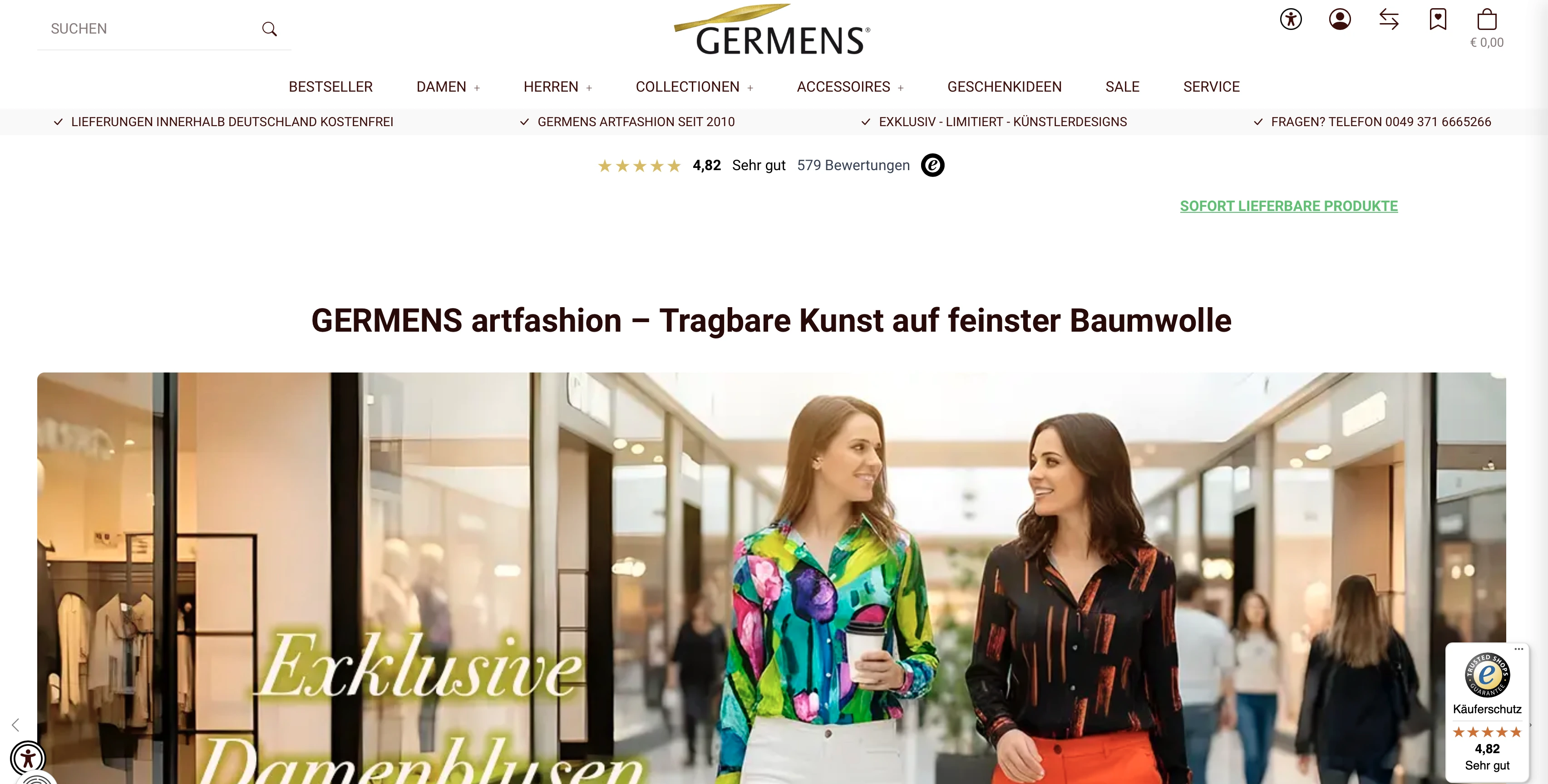Contact us
Get Started
Case Study
plans
When we took over Google Ads for two very different shops, bergbaukalender.de (a seasonal niche product) and GERMENS.shop (art-fashion with drop cycles), two issues blocked progress: high fixed agency fees and unreliable measurement. We started where most “quick fixes” skip: measurement. That meant clean events, unambiguous conversions per shop, deduped signals, and an attribution setup that makes decisions defensible.
With the foundation in place, we simplified the account structure. Brand, generic and long-tail were separated by intent. Match types were used deliberately. Negatives were maintained as a living policy. Ad assets were aligned to the query’s promise, not to internal naming. In parallel, we flipped the cost equation: from €800/month in fees to €159 in software. Lower fixed costs are not a vanity win. They create test bandwidth and testing is the engine.
From there, progress came from disciplined small steps at a high cadence. AI-guided micro-optimizations reallocated spend to winners, dialed down underperformers, mined long-tail queries, expanded negatives and rotated assets. None of this is magic. It’s boring, repeatable process and it only works when measurement can be trusted.
Within two months, both shops saved 155 hours of busywork and avoided €850 in wasted ad spend. Fixed costs dropped by €641/month. The +63% CTR lift isn’t the trophy. It’s a symptom of better query-ad-landing alignment. We also separate tactics from context: the calendar business has seasonality. The fashion brand peaks around drops. That’s why we benchmark gains against explicit periods, keep attribution consistent and watch impression mix so brand inflation doesn’t flatter the numbers.
What’s left? Turn on Target ROAS where data density supports it, not everywhere by default. Treat negative keywords as an ongoing loss-prevention policy. And be explicit about method: time windows, attribution, data hygiene. Strong claims like “ROI from day one” deserve clear assumptions and a screenshot trail.
Measurement note: GA4 data-driven attribution, 56 days before vs 56 days after, seasonality for the calendar business reviewed separately.

plans
Get Started
FAQs
plans
How did ROI turn positive on day one?
By dropping fixed fees and moving budget immediately toward profitable queries under clean tracking.
What does “AI-guided” actually do?
It weighs query profitability, conversion lag and asset engagement to suggest bid/budget moves and to rotate creatives.
How do you control for seasonality?
Separate baselines per shop, identical attribution windows and impression-mix checks to avoid brand inflation.
What does this cost?
No agency retainer, ongoing software at €159/month plus a one-time tracking audit.